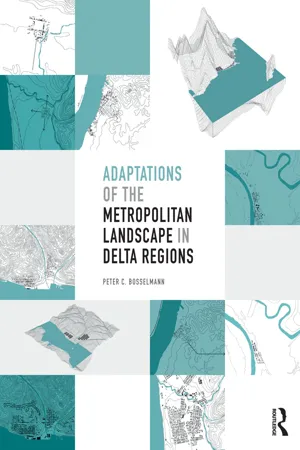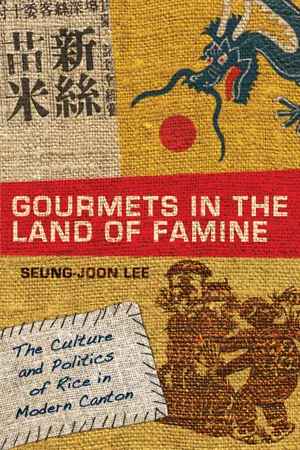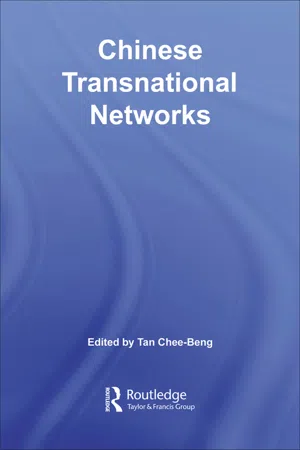History
Guangzhou
Guangzhou, historically known as Canton, is a major port city in southern China. It has a rich history dating back over 2,000 years and has been a key trading hub and cultural center. Guangzhou played a significant role in the maritime Silk Road and has been an important city in the development of Chinese history and culture.
Written by Perlego with AI-assistance
Related key terms
5 Key excerpts on "Guangzhou"
- eBook - ePub
Republicanism, Communism, Islam
Cosmopolitan Origins of Revolution in Southeast Asia
- John T. Sidel(Author)
- 2021(Publication Date)
- Cornell University Press(Publisher)
Guangzhou (or Canton), after all, served for centuries as a major hub for maritime trade in ways that included or otherwise impacted on various parts of the territory stretching from the Tonkin Gulf and the Red River plain to the Mekong River Delta that today comprises Vietnam. Such lineages and linkages can be dated at least as far back as the consolidation of the Han dynasty, its southward expansion, and conquest and absorption in 111 BCE of the autonomous realm of “Southern Yue” (Nan Yue) with its capital Panyu located in today’s Guangzhou and a breadth encompassing the area (later the Tang imperial circuit) that came to be known as Lingnan (South of the Pass) along the southeastern coastal rim of China, including the modern Chinese provinces of Guangdong and Guangxi, as well as the Red River plain. 1 Under the Han, two great port cities emerged and expanded, Guangzhou at the mouth of the Pearl River Delta, and Jiaozhi, located near the mouth of the Red River Delta, east of what today comprises H à N ộ i. 2 Of the two port cities, Jiaozhi served as regional capital and was initially larger and more important, thanks to the greater agricultural productivity and population density of the Red River plain at the time as well as Jiaozhi’s evolution into the premier trading hub of the South Sea trade for the duration of the Han period and as late as the era of the Northern and Southern Dynasties (420–589 CE). 3 But by the inception of the Tang dynasty in 618 CE, Guangzhou had long been administratively separated from Jiaozhou and had begun to outstrip Jiaozhi as a hub for international maritime trade, thanks to improvements in ship-building technology enabling eastward shifts in shipping routes 4 and the increasing accessibility and integration of its vast and expanding hinterlands, rendering it especially attractive to Arab, Persian, and Indian traders from across the Indian - Peter C Bosselmann(Author)
- 2018(Publication Date)
- Routledge(Publisher)
Part II The Pearl River DeltaWith contributions by Mathias Kondolf and Francesca Frassoldati“I have quite often contemplated the beautiful views of Rhine and Maas in Europe,” wrote Michel of Brabant in 1753, “but these two together are not a quarter of what the rivers of Canton alone offers for admiration.”Fernand Braudel (1992) included this quote by the Dutch traveller in his Structures of Everyday Life and adds: “Perhaps no site anywhere in the world was more privileged for short and long distance trade than Canton. The town was thirty leagues from the sea (120 km from Hong Kong), but still felt the throb of the tide on its numerous stretches of water. Sea vessels, junks, or three masters from Europe could therefore link up with small crafts, the sampans, which reached all or nearly the entire Chinese interior using canals.”Canton was the name given to the seaport by Portuguese sailors in 1514. The name in Portuguese, Cantão, was probably an auditory interpretation of the Chinese Guangdong, the name of the province with Guangzhou as its capital. The first Chinese name for the location was Panyu, first mentioned in 206 BC, now used to refer to a location south of Guangzhou’s historic center.Briefly expelled from the region, Portuguese traders established Macao, the first European colony in China in 1557. Among the Europeans, the Portuguese held a monopoly on trade with China until the arrival of Dutch ships in the early 17th century, but for a much longer time the port at Guangzhou was a regular destination for ships on the maritime silk route from the Middle East and India. From the Chinese perspective, Guangzhou and the ports of the Pearl River Delta are China’s most southern ports; they owed their fortunes to the Manchu empire’s1- eBook - ePub
The Hong Kong-Guangdong Link
Partnership in Flux
- Reginald Yin-Wang Kwok, Alvin Y. So(Authors)
- 2020(Publication Date)
- Routledge(Publisher)
3 So it seemed that Guangzhou’s loss was Hong Kong’s gain.Many factors were thus combined to undermine Guangzhou’s position in foreign trade in the 1860s. The combined total value of its imports and exports fell from $34,600,000 (Mexican silver dollars) in 1860 to $21,400,000 in 1865. When compared with other newly opened treaty ports in customs duties collected, Guangzhou fell behind Shanghai, Fuzhou, and Hankou during the mid-1860s (Hao, 1970: 50; Tables 3 and 4). However, a decade later, Guangzhou recovered partially, and from 1870 to the 1890s it ranked second only to Shanghai in gross value of foreign and domestic trade as recorded by the Chinese Maritime Customs (Murphey, 1953: 121). In terms of Guangzhou’s external trade, there was a fairly steady leveling for two decades, with only minor ups and downs in the total value of import and export from 16,584,833 taels in 1867 to 16,206,606 taels in 1885. A significant upward increase was registered from the 1886 figure of 22,196,613 taels to 29,519,629 taels in 1894, on the eve of the Sino-Japanese War (Cheng, 1985: 101–2). This recovery was due in part, paradoxically, to Hong Kong’s rise.Following the end of the Arrow War and the Taiping Movement, Hong Kong enjoyed almost uninterrupted growth and the colony rapidly developed from a small outpost of the British empire into a major international entrepôt. With its spacious, deepwater harbor, Hong Kong was able to challenge and eventually displace Guangzhou as the international port of south China catering to coastal as well as oceangoing vessels. The total number and tonnage of ships engaged in foreign trade that entered and cleared Hong Kong harbor increased steadily: from 1,975 ships of 1,354,173 tons in 1858, to 4,791 ships of 2,640,347 tons in 1869 (one year after the Suez Canal was opened), to 21,867 ships of 22,939,134 tons in 1913, the eve of World War I; by 1930, 28,374 ships of 37,909,385 tons were recorded by the port authorities (Hong Kong, 1932: 2–9). When native Chinese junks and steamers engaged in inland and coastal trade are included, the figures for Hong Kong’s total shipping tonnage increase from 35 percent to 40 percent. - eBook - ePub
Gourmets in the Land of Famine
The Culture and Politics of Rice in Modern Canton
- Seung-Joon Lee(Author)
- 2011(Publication Date)
- Stanford University Press(Publisher)
36In short, the coexistence of commercial prosperity and rice insufficiency was primarily preconditioned on geography: the mountains, rivers, and sea. Yet geography by itself was nothing more than a condition. How did the local actors respond to such circumstances and secure a route for their food supply? How did the Cantonese write the history of their rice supply? To better understand the history of the Cantonese rice supply, we have to begin with the origins of the interprovincial rice trade between Guangxi and Guangdong.Getting Guangxi Rice to Guangdong
The record of Canton’s external rice supplies traced back to the eighteenth century—a century often praised as the Prosperous Age (shengshi )—during which the Qing empire experienced both a growing economy and social stability. Cash-cropping and market specialization in both rural and urban sectors led to this century-long prosperity that the world admired. As the economic core of the region “South of the Mountains,” Canton and the surrounding Pearl River Delta claimed the second largest regional economy in the empire after the Jiangnan region; the population engaged in commercial and urban sectors was estimated to be about 2 million in Canton and the Pearl River Delta, while its counterpart in the Jiangnan region was between 3 and 4 million.37 To sustain the urban population, an inter-provincial grain trade developed widely throughout the empire. Given the geographical conditions, Guangxi supplied grain through the West River to the Pearl River Delta, while middle-Yangzi provinces such as Hubei and Hunan became the major grain supplier for the Jiangnan population.38To late imperial officials in Guangdong, Guangxi was indeed a reliable rice basket. The first account of interprovincial rice shipping is found in the records of the Qing government granary management. To lower soaring rice prices in Canton, in spring 1727 the governor-general of Liangguang (that is, “the two Guangs,” Guangdong and Guangxi), Kong Yuxun, was permitted by the court to transfer 300,000 shi of grain from Guangxi’s ever-normal granaries (changpingcang ) to Canton granaries. After its prompt arrival, Kong stored four-fifths of the grain in Canton’s provincial granary and the remaining fifth in a prefectural granary.39 Afterwards, Guangxi became the key rice supplier for the increasingly urban population of Canton. By the 1750s, Canton’s provincial granaries stored double the reserves that they had had thirty years earlier. Furthermore, a special decision was made in 1759. Guangxi’s Governor E Bao decided to reserve 100,000 shi of Guangxi rice annually, about 8 percent of the Guangxi granary reserve. He called this special reserve the “Guangxi Grain Reserved for Guangdong” (Beidonggu ).40 Maintaining the lifeline for a population of millions was the cardinal objective of local officials. A series of official efforts to ship Guangxi rice to Guangdong was no doubt a praiseworthy event. The nineteenth-century compilers of the “statecraft school” (jingshi ) carefully recorded these cases of interprovincial rice shipments between Guangxi and Guangdong and extolled them as a role model for famine relief (huangzheng ).41 - eBook - ePub
- Chee-Beng Tan(Author)
- 2006(Publication Date)
- Routledge(Publisher)
9 Out-migration has been an important feature of Hong Kong since its early days as a British colony. It was a funnel for substantial numbers of rural migrants, especially from the Pearl River Delta region, as they went to labor in the mines, on the plantations, and on the railroads of Southeast Asia, the West Indies, and the Americas, until well into the twentieth century (Sinn 1995: 11–34). Out-migration from the late 1960s, especially to Australia, Canada, New Zealand, and the United States—states that had imposed severe restriction on Chinese immigration—has been an important aspect of modern Hong Kong. It furthers the internationalized character of the Hong Kong population, more so given a degree of return migration in which foreign passport holders of Chinese origin have returned to Hong Kong to work, sometimes leaving family members behind in the countries of migration (the “astronaut” phenomenon). There are some important class issues involved in this process (Salaff and Wong 1994: 205–90; Skeldon 1994).10 Nostalgia about the past is reflected in televised soap operas set either in the 1950s or in the 1920s and 1930s, and by documentary efforts to capture the rapid disappearance of popular cultural forms. A recent television program on Guangzhou television portrayed the popular culture of Xiguan, the prewar commercial center in the western part of Guangzhou, which emphasized food traditions, the rickshaw, letter writers, street-side beauticians, Cantonese popular ballads, all of which, in both Hong Kong and Guangzhou, have disappeared from public view, although they can still be found in Macao.11 It is only underscored by the enormous apparent proclivity of the Hong Kong population to travel. There are few statistics available on the amount of travel that residents of Hong Kong make. Much of the tourism to China (about 88 percent) consists of visitors from Hong Kong, Macao, and Taiwan, Hong Kong visitors the most numerous. Travel to other world venues, often by packaged tour, is a profitable business. Impressionistically, it involves all social classes and all ages. Familiarity with the non-Chinese world is substantial. Partly, such travel is to visit relatives who have moved abroad, but tourist activities to those parts of the world, which have few Chinese immigrants, appear to be considerable.12
Index pages curate the most relevant extracts from our library of academic textbooks. They’ve been created using an in-house natural language model (NLM), each adding context and meaning to key research topics.




